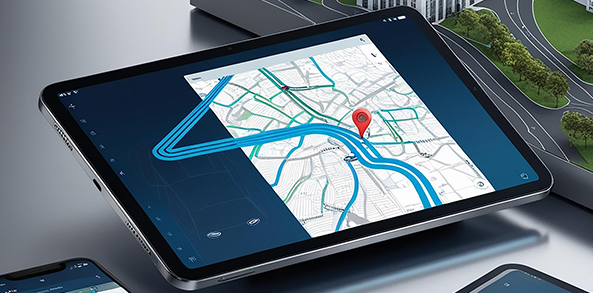

The real estate industry in India has traditionally leaned on manual methods for property management and market analysis, much like its global counterparts. However, with the advent of Geographic Information Systems (GIS) mapping, the landscape of real estate in India is undergoing a significant transformation. GIS technology offers an advanced way to visualise, analyse, and interpret data that is tied to specific locations, making it a valuable tool in the Indian real estate sector where diverse and complex geographies require more precise data for decision-making.
Traditionally, property managers have relied on spreadsheets and paper records to track maintenance schedules, tenant information, and asset locations. Similarly, market analysts have depended on demographic data, public records, and anecdotal evidence to evaluate investment opportunities and identify potential development sites. These methods, while functional, are increasingly becoming outdated in the face of rapid urbanisation and the growing need for more sophisticated, data-driven approaches.
Geospatial technology enables users to collect data associated with specific coordinates on the Earth’s surface, encompassing everything from physical infrastructure like buildings and roads to demographic details such as population density and income levels. By integrating GIS into property management and market analysis, real estate professionals in India can gain deeper insights, optimise operations, and enhance tenant experiences. Geospatial information systems (GIS) were first used in India in the 1980s, and were used extensively by the Survey of India during the early 2000s.
In 2024, the Municipal Corporation of Delhi (MCD) mandated that property owners should ‘Geotag’ their homes by the end of March. Further, in the Union Budget 2024-25, Finance Minister Nirmala Sitharaman announced the digitisation of urban land records using GIS mapping which is a landmark decision. This technology is empowering property managers in India to streamline operations and improve tenant satisfaction through data-driven decisions.
Optimising Maintenance and Repairs
Consider a scenario where every asset within a property portfolio is tracked for its location and condition. With GIS, property managers can accurately locate each building component, such as electrical panels or heating, ventilation, and air conditioning (HVAC) units, and integrate this data with maintenance history. This allows them to identify trends, predict potential issues before they escalate into costly repairs, and efficiently schedule maintenance activities. The ability to optimise technician routes based on geospatial data also minimise downtime for tenants, leading to a more seamless living experience.
Enhancing the Tenant Experience
By combining geospatial data with tenant feedback, property managers can identify areas where amenities and services need improvement. For instance, if data reveals that one particular gym in an apartment complex is underutilised while another is overcrowded, management can relocate resources to better serve tenants. GIS can personalise communication efforts, tailoring marketing campaigns and service notifications based on a tenant’s location within the property. Virtual tours and 3D visualisations created using geospatial data further enhance the leasing process by allowing prospective tenants to explore properties remotely; a feature that is increasingly important in India’s expanding urban centres.
Market Segmentation and Targeting
Developers can pinpoint optimal locations for new projects by layering GIS data with demographic information and rental market trends. For example, identifying neighbourhoods with a high concentration of young professionals seeking rental properties can guide developers in tailoring their projects to meet market demand. This data-driven approach allows for more precise market segmentation, enabling more effective targeting of potential tenants through marketing campaigns.
Investment and Valuation
GIS data can provide real-time insights into factors that significantly influence property values, such as upcoming infrastructure projects or changes in neighbourhood dynamics. The construction of a new metro line or the development of a public park can either enhance or diminish property values. Investors can leverage this information to make more informed decisions about acquisitions and developments.
Challenges and Considerations
Data access and integration can be complex, as public data may be limited or inconsistent, and private data sets can be costly. Integrating GIS with existing management or market analysis systems requires technical expertise. There are also cybersecurity concerns and data privacy regulations that must be addressed, particularly when dealing with sensitive tenant information.
The Future of Real Estate with Geospatial Technology
The future of Indian real estate is closely linked to advancements in geospatial technology. As GIS integrates with artificial intelligence (AI) and machine learning (ML), property managers can move towards predictive maintenance, while investors can use AI-powered tools for more accurate market predictions. Combined with augmented reality (AR) and virtual reality (VR), GIS can also transform property marketing and management, offering remote virtual tours and real-time maintenance support.
Geospatial technology is set to redefine real estate in India, offering a data-driven approach to property management. Leading Indian real estate advisory firm The Guardians provides essential assistance to developers in every possible way. Visit The Guardians’ website for insightful analysis and direct property advice. Specialising in property advisory and real estate management services, we also increase the value of projects.